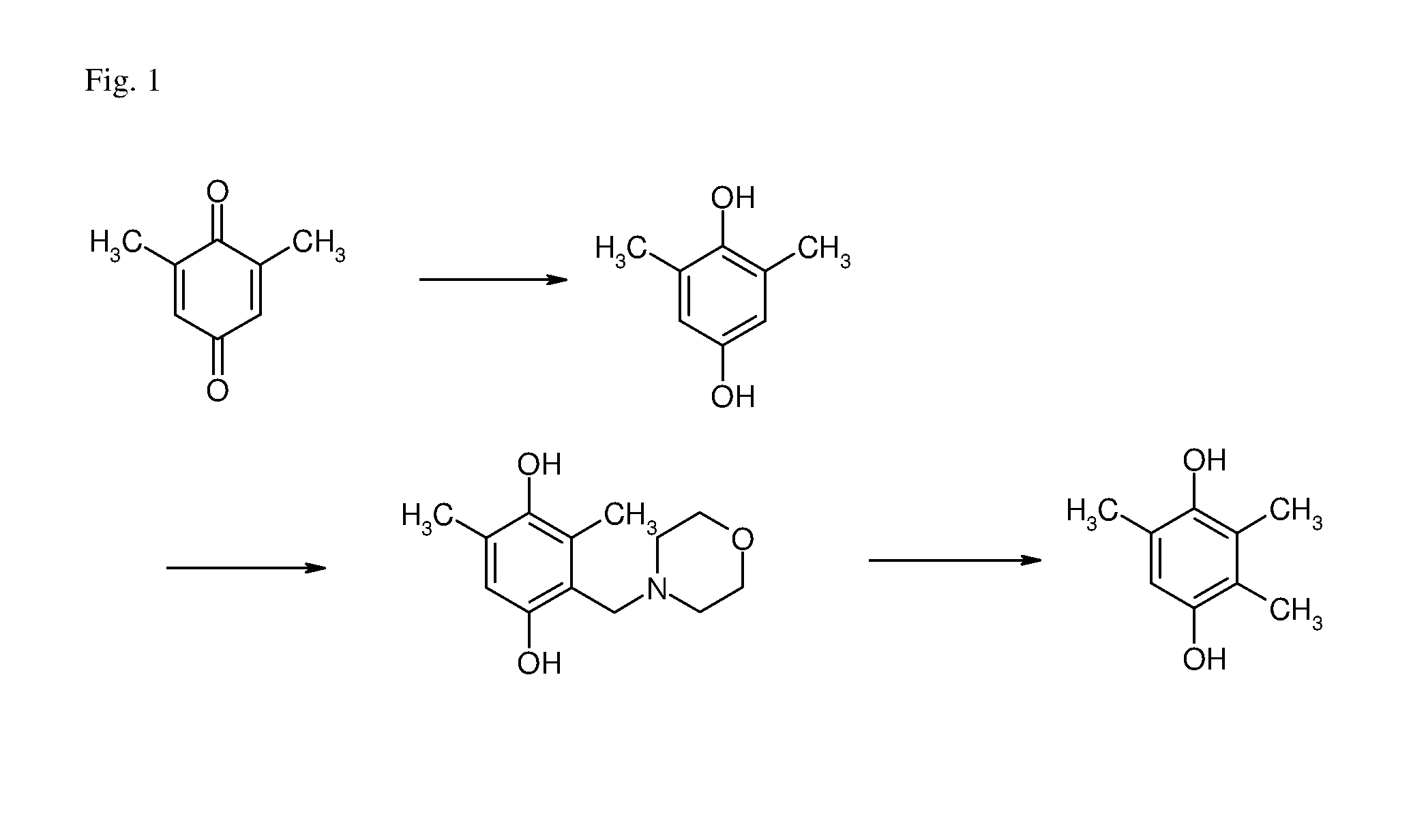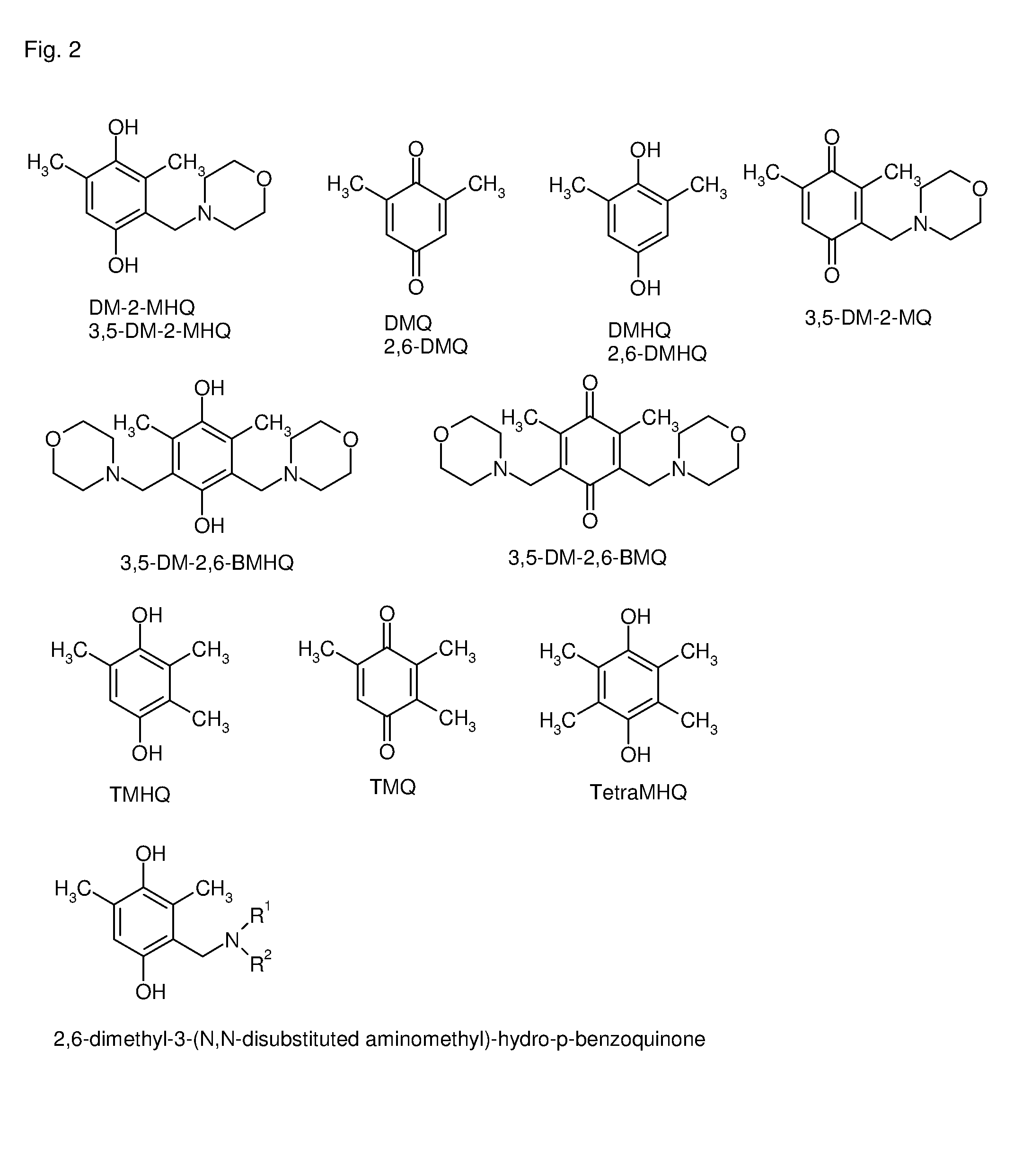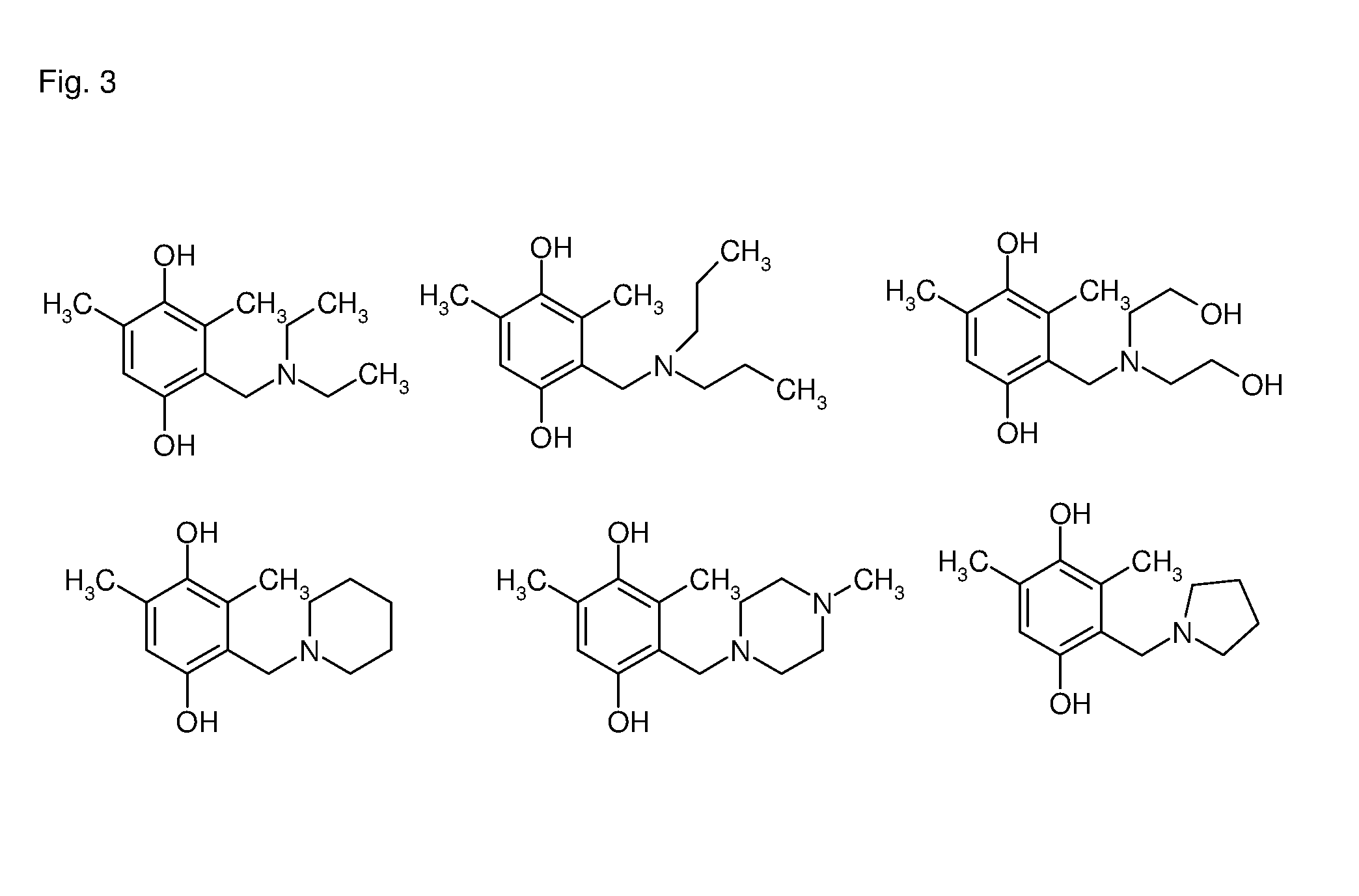Process for the manufacture of TMHQ
a technology of tmhq and process, which is applied in the preparation of carbonyl compounds, organic chemistry, and amino compound preparations, etc., can solve the problems of large amounts of bis-mannich adducts and the difficulty of further reaction products to be removed, and achieves the effect of reducing the difficulty of bis-mannich adduct removal
- Summary
- Abstract
- Description
- Claims
- Application Information
AI Technical Summary
Benefits of technology
Problems solved by technology
Method used
Image
Examples
examples
[0119]The following abbreviations were used (see also FIG. 2):
MTBE=tert.-butyl methyl ether
wt-%=weight-%
DM-2-MHQ=dimethyl-2-morpholinomethyl-quinone
(2,6-)DMQ=2,6-dimethylbenzoquinone (starting material for step a), its purity being not critical)
(2,6-)DMHQ=2,6-dimethyl-hydro-p-benzoquinone
3,5-DM-2-MQ=3,5-dimethyl-2-morpholinomethyl-quinone
3,5-DM-2-MHQ=3,5-dimethyl-2-morpholinomethyl-hydro-p-benzoquinone (=2,6-dimethyl-3-morpholinomethyl-hydro-p-benzoquinone)
3,5-DM-2,6-BMHQ=3,5-dimethyl-2,6-bismorpholinomethyl-hydro-p-benzoquinone
3,5-DM-2,6-BMQ=3,5-dimethyl-2,6-bismorpholinomethyl-p-benzoquinone
TMHQ=2,3,5-trimethyl-hydro-p-benzoquinone
TMQ=2,3,6-trimethylbenzoquinone
TetraMHQ=2,3,5,6-tetramethylhydro-p-benzoquinone
s / c=substrate / catalyst ratio
bara=bar absolute
[0120]Catalysts:
[0121]The following catalysts were used:[0122]a 5% Pd / C catalyst with a BET surface area of 1000 m2 / g and the following particle size distribution: 10% of the particles ≦6 μm, 50% of the par...
example i.17
[0146]In a 2-liter steel autoclave, 125.7 g (815 mmol) of DMQ were dissolved in 910 ml of tert.-butyl methyl ether (MTBE) under a nitrogen atmosphere at 23° C. To this solution were added 8.64 g (s / c 100) of a Pd / C (10 weight-% Pd, based on the total weight of the catalyst) catalyst. With stirring (gas dispersion stirrer, 1000 rpm) the autoclave was pressurized with hydrogen to 6 bara. During this process the temperature rose to 30° C. After the exothermic reaction had ceased, the reaction mixture was heated to 40° C. After 75 min, the catalyst was filtered off and washed with 140 ml of MTBE. The combined ether layers were concentrated under reduced pressure at 40° C. and the solid crude product was dried for 2 hours at 40° C. The off-white crystalline DMHQ was obtained in 92% yield and 85% purity.
[0147]Most reactions were carried out on a 150-300 mg scale. Experiment I.17 demonstrates that the reaction conditions from the screening experiments also apply for a larger laboratory sca...
example ii.1
Aminomethylation in tert.-butyl methyl ether
[0148]To a stirred suspension of DMHQ (20.8 g, 99.5 wt-%, 150.0 mmol) in tert.-butyl methyl ether (MTBE, 75 ml) was added under an argon atmosphere the Mannich reagent (26.35 g, 225.0 mmol, 1.5 mol equiv.) prepared from morpholine and paraformaldehyde according to example 1 of U.S. Pat. No. 6,066,731. The resulting brown solution was heated to 60° C. (oil bath temperature 70° C.) for 6 hours. During this time the brown solution turned to a suspension. The reaction mixture was cooled down to 0° C. in an ice bath, the colourless crystals filtered off by suction filtration (P3 frit), washed twice with 10 ml each of cold (0° C.) MTBE, and dried overnight (16 hours) at room temperature under high vacuum. The colourless crystals obtained (31.704 g) were analyzed by quantitative HPLC. The mother liquor was evaporated in vacuo (40° C., 20 mbara), further dried overnight (16 hours) at room temperature under high vacuum. The 11.369 g dark red oil wa...
PUM
| Property | Measurement | Unit |
|---|---|---|
| Temperature | aaaaa | aaaaa |
| Temperature | aaaaa | aaaaa |
| Temperature | aaaaa | aaaaa |
Abstract
Description
Claims
Application Information
 Login to View More
Login to View More - R&D
- Intellectual Property
- Life Sciences
- Materials
- Tech Scout
- Unparalleled Data Quality
- Higher Quality Content
- 60% Fewer Hallucinations
Browse by: Latest US Patents, China's latest patents, Technical Efficacy Thesaurus, Application Domain, Technology Topic, Popular Technical Reports.
© 2025 PatSnap. All rights reserved.Legal|Privacy policy|Modern Slavery Act Transparency Statement|Sitemap|About US| Contact US: help@patsnap.com



